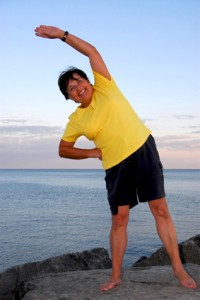Rhode Island has officially become the first state in the United States to mandate flu shots for all healthcare workers, despite objections from unions and the local affiliate of the ACLU (American Civil Liberties Union). This means that all healthcare workers employed by hospitals, nursing homes, home care agencies, or any other healthcare organizations in the state will be forced to roll up their sleeves.
Of course, anyone who has a valid medical reason can be exempted from getting a flu shot. Employees can also refuse to get a flue shot by signing a document; however, these workers must wear a mask at all times when in contact with patients when flu activity is noted in the state.
Arguments Against
– The “Nanny State” argument: Our bodies and anything we put in our bodies should not be controlled by the government. Many people disagree that the government has any right to tell healthcare workers to get a vaccine that is potentially dangerous and could cause dangerous side effects. This argument seems to be the most commonly cited argument against getting an influenza vaccine. Health concerns aside, many people are firmly against the government forcing healthcare workers to get a flu shot, as a matter of principle.
– Ineffectiveness of the vaccine: Many of those against mandatory vaccination state that they do not believe the vaccination is effective in preventing influenza.
– Danger associated with vaccination: Many healthcare workers state that they became ill after receiving a vaccination at some time in the past, and so they have refused to get the vaccine ever since. Although serious reactions are rare, the fact that serious reactions do sometimes occur, even if very rarely, makes many people adamant that they will not get the shot and will not be forced into it by anyone, especially the government.
Arguments For
– Patient protection: We owe it to our patients to get vaccinated. In doing so, we protect those who are vulnerable (i.e., infants, the elderly, immunosuppressed individuals) and could potentially die should they come in contact with the virus.
– Herd immunity: When a large enough portion of the population is immunized against a particular disease, most members of the community will be protected because there is little opportunity for the disease to spread. Herd immunity protects the most vulnerable members of society and, as nurses, it is our duty to protect others.
– Role modeling: Many nurses state that, although they are not against the vaccine per se, they are against the vaccine for themselves. As nurses we are role models for others. When members of the community hear nurses speak out against influenza vaccination, it makes them less likely to get vaccinated, as nurses are respected as being knowledgeable about disease prevention.
– Vaccination reduces sick time: When nurses are immunized, there is less sick time, resulting in lower absenteeism, less overtime and less need to replace ill staff members. This could be an enormous cost-saving measure at a time when many organizations are struggling financially.
There are other arguments, but these arguments cover some of the biggest reasons for and against influenza vaccination. When it comes right down to it, we all have choices. Even the nurses in Rhode Island have a choice — they can get the vaccine or wear a mask when in contact with patients during the height of flu season. Getting the vaccine must be a personal choice for all nurses, one that many nurses struggle with every year.










